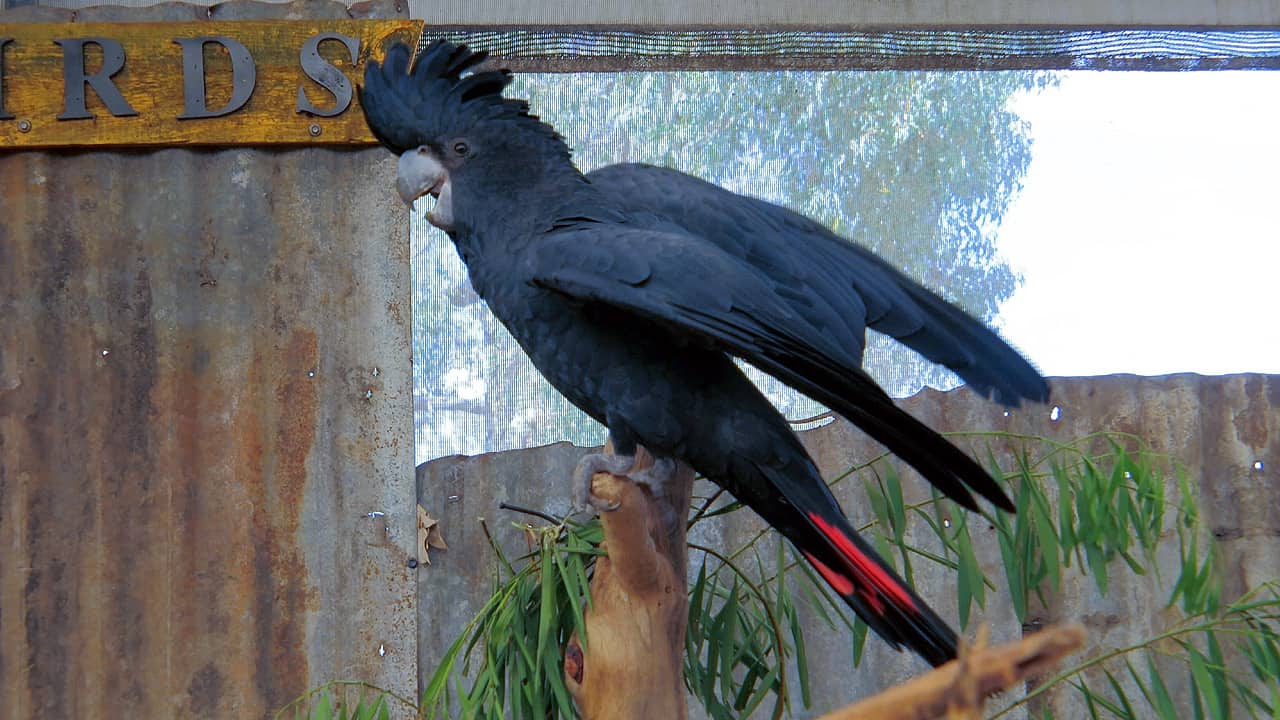Birds & Owls Caversham Wildlife Park Western Australia
Loading Video...
Birds & Owls Caversham Wildlife Park Western Australia
Birds and owls from Caversham Wildlife Park.
Blue-Winged Kookaburra
The Blue-Winged Kookaburra is the closest relative of the Laughing Kookaburra. It is sexually dimorphic, with a blue tail in the male, and a rufous tail with blackish bars in the female. The Kookaburra is the largest member of the Kingfisher family, with a distinctive call that they use to advertise territory. They can live for 20 years or more, and have a low birth rate to keep pace with their low death rate. They form permanent pairs and most young stay to help the parents defend the boundaries and protect further offspring.
Kookaburras are known to eat insects, rodents, snakes, lizards and the odd small bird; and have been witnessed flying in to grab an easy meal from unsuspecting picnic-goers.
They are found in the northern and northeastern coastal fringes of Australia, WA, the Kimberley’s and Pilbara; also Southern New Guinea.
Habitat – The black swan’s preferred habitat extends across fresh, brackish and saltwater lakes, swamps and rivers with underwater and emergent vegetation for food and nesting materials.
About Tawny Frogmouths
Tawny Frogmouths are named for their large flattened hooked bills and huge frog-like gape. Tawny Frogmouths are often mistaken for being owls; however, they are actually more closely related to nightjars. Frogmouths are not raptorial or predatory birds. They catch their food with their beaks rather than with their talons, which is a major difference from the owl family. Owls fly around at night hunting food, whereas the. Tawny Frogmouths generally remain still on a low perch, waiting for food to come to them. Their large eyes and excellent hearing assists with their nocturnal hunting. The Tawny Frogmouth is considered the daytime camouflage specialist. They rest, horizontally and perfectly still, on branches during the day, beautifully camouflaged – this is their defence when they feel threatened.
They feed on large nocturnal insects, spiders, centipedes. Occasionally small mammals and frogs. The Tawny Frogmouth is found in open forests and woodlands widely across Australia.
Caversham Wildlife Park introduces visitors to the unique selection of wildlife in Western Australia, from iconic native species to farm animals and rich birdlife.
Birds & Owls Caversham Wildlife Park Australia
About Gang-gang Cockatoo
The Gang-Gang Cockatoo belongs to the genus Callophalon which means “beautiful headed”. They are sexually dimorphic, with the male sporting a redhead and the female being grey all over. This cockatoo can live up to 50 years and are found in the south-east corner of Australia; with a very restricted range including south-east Victoria and New South Wales (including ACT). The Galah is considered to be the Gang-gang Cockatoos’ closest living relative.
Gang-gang Cockatoos feed mainly on seeds of native and introduced trees and shrubs, with a preference for eucalypts, wattles and introduced hawthorns. They will also eat berries, fruits, nuts and insects and their larvae.
Found in the cooler and wetter forests and woodlands of Australia, particularly alpine bushland.
Red-tailed black cockatoo
The red-tailed black cockatoo (Calyptorhynchus banksii) also known as Banksian- or Banks’ black cockatoo, is a large black cockatoo native to Australia. Adult males have a characteristic pair of bright red panels on the tail that gives the species its name. It is more common in the drier parts of the continent. Five subspecies are recognised, differing most significantly in beak size. Although the more northerly subspecies are widespread, the two southern subspecies, the forest red-tailed black cockatoo and the south-eastern red-tailed black cockatoo are under threat.
About Caversham Wildlife Park
David and Pat own and operate Caversham Wildlife Park with their son David & daughter Debbie.
When they purchased the park in 1988, the park housed a small collection of animals and birds on a modest 5 acre (2ha) property. A few years later, the park doubled in size, when the family purchased the adjoining property and the collection started to boom. In May 2003, the family designed and built a new park in Whiteman Park, once again, more than doubling in size.
Opening Hours of Caversham Wildlife Park
Caversham Wildlife Park is open 9.00am to 5.30pm every day of the year except Christmas day (December 25).
Last entry into the park is at 4.30pm.
We recommend you arrive before 3.00pm if you wish to see and do everything (some attractions start to close from 3.00pm).
To make the most of your visit and enjoy all of the attractions, we recommend you allow at least 3 hours in the park.
Monday 9.00am – 5.30pm
Tuesday 9.00am – 5.30pm
Wednesday 9.00am – 5.30pm
Thursday 9.00am – 5.30pm
Friday 9.00am – 5.30pm
Saturday 9.00am – 5.30pm
Sunday 9.00am to 5.30pm
Come and spend the day at one of Perth’s most exciting tourist attractions, showcasing the largest private collection of native wildlife in Western Australia.
Hand-feed the kangaroos, join in the interactive farm show, touch a possum or lizard, meet a wombat, watch the cheeky penguins being fed, and have photos taken with koalas! Caversham Wildlife Park; a great Australian meet & greet experience for the whole family, in one fantastic day!
All of our shows, interactive experiences, photo opportunities and animal food are included in the entry fee! With no extra money needed around the park, you can make the most of your experience at Caversham Wildlife Park.
Caversham Wildlife Park is very proudly owned and operated by a Western Australian family. We don’t receive any Government assistance; the park is solely funded by visiting patrons! Thank you for your support and assistance!

0 Comments Be First to Comment